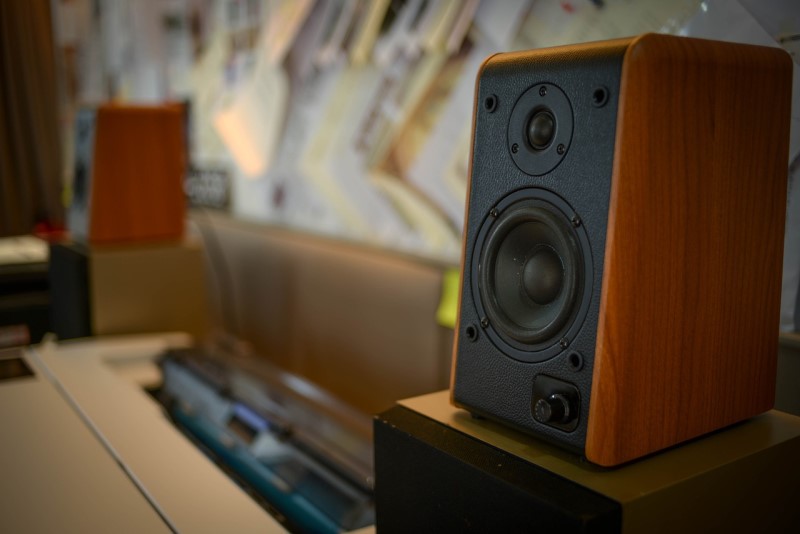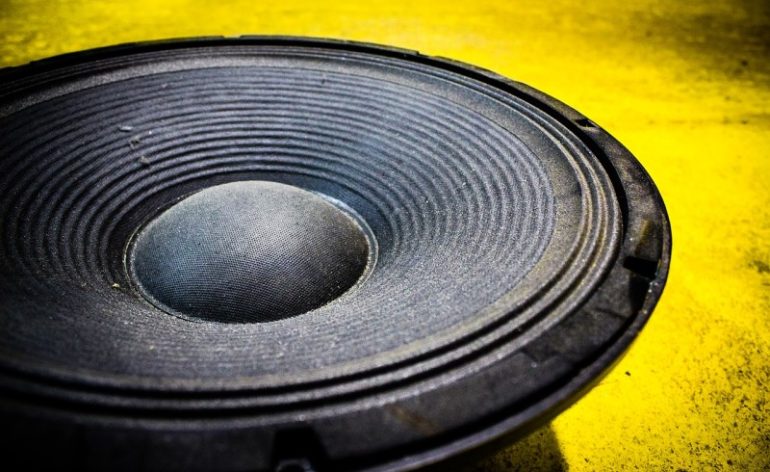Buzzing, Clanging, and Protection Mode: Troubleshooting Speaker Noises
Your speaker just made the world’s worst sound. You’re not sure what it was but it didn’t sound healthy. When your speaker crackles, buzzes, or makes other unwanted noises, your heart sinks. What could be wrong? How do you fix it? More importantly, how do you track down the source of the problem? Let’s troubleshoot your speaker noises!
Persistent Buzzing Noises from One Speaker

Are you getting a buzzing noise whenever a specific speaker fires? The likely culprit is speaker damage. Troubleshooting this speaker noise is probably the easiest of all the noises, but it is also the most expensive. The first thing to do is to remove the speaker grilles and examine the drivers. You are looking for tears or rips. The most likely place? The surrounds. Not the surround speakers, the surround around the driver material.
The surround is the soft stuff around the stiff cone material. It really has little function other than to keep air from passing around the driver cone. But if it gets a tear in it, it will allow air through and that air will vibrate the torn parts of the surround. That is what is causing the buzzing.
The fix is to either get your driver repaired or to replace the whole speaker. Step one will be to call the manufacturer and get their recommendations. They may simply send you a new driver. Otherwise, you’ll want to contact a local shop for pricing. Replacing the speaker might actually be cheaper. There are surround repair kits you can get online as well. They consist of a foam surround that will replace the current surround. There are lots of videos out there on how to do this. While we’ve not had personal experience with them, they aren’t that expensive. Might be worth a try if the alternative is to buy a new speaker.
Troubleshooting Clanging Noises at High Volumes

You were blasting your favorite movie/music and something went clang. And then again. And again. You were pretty sure that wasn’t good so you turned it down. At that point, either your speaker no longer worked right or it sounded fine. What was that? Should you worry about it?
What were you doing when you heard the sound? Was your receiver set at a volume higher than ever before? Were you trying to hold a rave in your home? Are your speakers small but you were running them full range (set to large during setup)? This is one of the harder speaker noises to troubleshoot.
The driver in your speaker bottomed out. This used to happen pretty commonly with subwoofers, but most manufacturers have included protection in their subs that keeps this from happening. In speakers, if you overdrive them (turn up the volume too high), the driver can reach the limits of its excursion. The driver then slams into the backplate. This usually happens when you try to make a speaker play low bass loudly.
The fix? Turn it down, cross it over. If you are running your speakers as large, switch them to small and get a subwoofer. Even without a subwoofer, the crossover will keep the lowest bass from your speakers. They can’t accurately (or safely) play it anyhow. Regardless, turn it down. If you don’t, you could damage your speaker.
If you didn’t turn it down in time, you could have damaged your driver. The cone doesn’t move anymore? That’s a bad sign. Also, if the driver moves strangely or if there is rip in the cone material, this could indicate that you drove the driver to failure. At this point, if you can’t get a replacement driver from the manufacturer, you’ll need to buy a new speaker.
Buzzing and then the Receiver Shutting Off after Longer Use

You are half-way through a movie and you hear a crazy buzzing sound from one of your speakers. Suddenly, your receiver shuts off and displays some sort of protection message. After a few minutes of panic, you get your receiver to turn back on and everything seems fine. For a while. And then it happens again. What the heck?
Troubleshooting these speaker noises is the most time consuming but usually results in a fix that costs you no money. The problem here is that you have some sort of short across your speaker wire. If you have a bare wire connection, you’ll need to go back and reterminate the speaker at the speaker side AND the receiver side. If not, check each connection carefully. Are your preterminated wires touching? Is there something lying across the wire ends? Something is connecting both the sides of the speaker wire.
When it happens after some time, the culprit is almost always a bare wire connection with a stray wire. As you send power down the speaker wire, it heats up. When the stray wire heats, it starts to bend slowly. When it gets close enough to the other wire, it creates a short. This causes your receiver to go into protection mode (which is great because the alternative is that the speaker channel will be damaged and likely unusable).
Alternatively, something could be causing the short. This can be something that fell behind your receiver and is lying across the speaker wires. The fix might be as simple as cleaning up behind your equipment rack. If you’ve done all this and it is still happening, the problem might be in your walls. Did you run your speaker wire in the wall? Did you then hang a picture or room treatment and forget that you might hit a speaker wire with the nail? If so, you may need to pull your speaker wire out of the wall and run new wire. A hassle, sure. But it is still cheaper than replacing your speaker or receiver.
Conclusion
While there are lots of potential speaker noises, this troubleshooting guide should help track done some of the most common. Honestly, the last one is, by far, the most common. Luckily, it is the least expensive to fix. A little speaker wire, a little time, and boom! Fixed. Do you have a weird speaker noise? Let us know in the comments and we’ll try to help!


